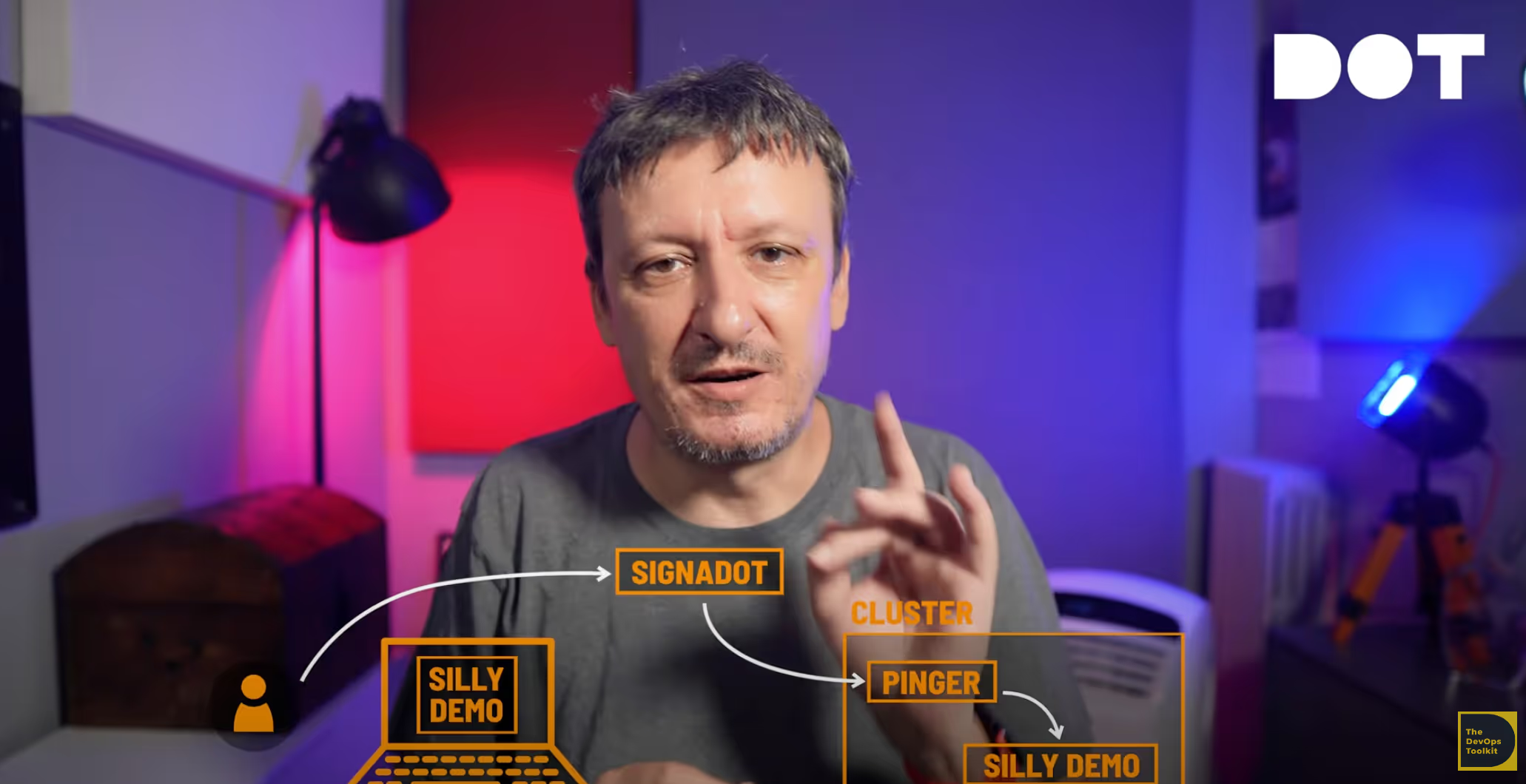DevOps Toolkit Webinar: Mastering Local and Ephemeral Development with Kubernetes

We're big fans of Viktor's whole DevOps Toolkit series so it was so neat to see him taking Signadot for a spin for local development and PR previews of microservices!
Service mesh, with its control of all requests between services, allows an approach where there is no need to create multiple test clusters or namespaces, but rather the requests to and from a developers test branch of a service are effectively isolated. In general this should look like:
- Allow the isolation of ‘systems under test’ with a unique tennant id
- ingest as normal
- route flagged requests to sandboxes
- create routing groups as needed
Summary: Exploring Signadot for Development Life Cycle Management
The discussion revolves around the search for a tool that can handle both traffic mirroring and deployments across different phases of the development life cycle. The focus is on Signadot, a tool that aims to solve these challenges.
Development Life Cycle
The development life cycle starts with local development. The need is to connect local apps to baseline apps running in a cluster without running the entire system locally. Once a feature is complete, a pull request is created, triggering CI pipelines that handle unit tests, linters, and security scans.
Local to Remote with Signadot
Signadot allows local apps to connect to a production-like cluster. It uses "sandboxes," isolated environments that contain only what's necessary to test a new feature while connecting to the baseline system. Signadot modifies the local `/etc/hosts` file and adds network mappings to enable this.
Remote to Local with Signadot
Signadot can also redirect traffic from remote apps to local apps. This is useful for testing how a local app interacts with a remote system.
Remote Development and PRs with Signadot
When a pull request is created, Signadot can fork resources from the baseline system in the cluster, allowing for the testing of new features in the context of the whole system. It uses a configuration file to specify what to fork and how to modify it.
Conclusion
Signadot offers a unique approach to managing deployments and network mirroring. It's particularly useful for monorepos or distributed monoliths. Signadot's unique features make it worth exploring for specific use cases.
Suggestion Podcasts
Join our 1000+ subscribers for the latest updates from Signadot







